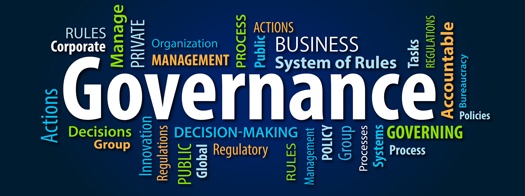
Recent management studies are attempting to dismantle and examine power relations inside and outside nonprofit organizations to open the black box of governance politicking, power struggles, board behavior and management decision making. Apparently it is a simplification to believe that organizations are run by the proverbial “boss” and all decisions that affect the organization are made by the “powers that be”.
Researchers are finding that governance is much more a “collective activity”. They have discovered that throughout the decision making process individual actors enlist the support of other individual actors until a powerful enough consensus has been formed to allow true power to accumulate and effect change.
DOMINANT COALITION
Reseachers call this consensus a Dominant Coalition. They define it as a discrete collection of people who act as a group to exercise power and engage in some or all dimensions of governance.
The concept explicitly recognizes that governance is a political and organizational process that inherently involves multiple layers and stake holders inside, as well as outside, the organization. Researchers find that decisions are made only after senior management has convinced the board to agree with the strategic direction; the board has brought donors onboard; supervisors have persuaded the social worker staff to commit to a strategy and to execute the tactics that implement that strategy.
ENROLLMENT
The primary function of senior management is not to govern by decree but rather to effectively engage in what the researchers call, enrollment - building networks by guiding and motivating humans to work together to accomplish tasks. The question the researchers tried to answer is how these networks form, overcome resistance, and strengthen internally; how they gain coherence and consistency; how they enlist others to invest in or follow the program; how they bestow qualities and motivations on members; and how they become functionally indispensable.
INSCRIPTION
Leaders emerge when certain actors can translate the interests of other actors and enroll them in a distinct program through the exchange of power, money, commodities, obedience, etc. Even though you may not be aware of it, the real dynamic that governs your organization is your affirmation forming a collective with the affirmations of your colleagues. Only when you have arrived at a group agreement does an expectation of behavior become a conduct code and is inscribed into a handbook. Governance is not domination, but rather, coalition. Every sincere actor in an organization is part of the organization’s governance.
WHAT DOES ALL THIS MEAN TO YOU?
When you first join a nonprofit organization you might feel that you are a relatively insignificant worker-bee who is being paid money to do what the “higher ups” tell you to do. Quite quickly, however, your supervisor begins to enlist your cooperation in whatever he sees as his/her mission, your colleagues try to find out where you stand on certain issues, and your clients test you to see if they can get more out of you than they got from your predecessor. In other words, you are being invited to join a dominant coalition and participate in the governance of the organization. The longer you work there, the more a part of the governance you become.
If you still see yourself as a powerless worker-bee after working in your organization for six months or a year and find yourself complaining about the “bosses” and how they treat you, you are laboring under an inaccurate and ineffective self-image. Your compliance and participation in the evolving mission of your organization is an important part of the governance dynamic that controls your nonprofit.
Who governs your nonprofit organization? YOU DO.

